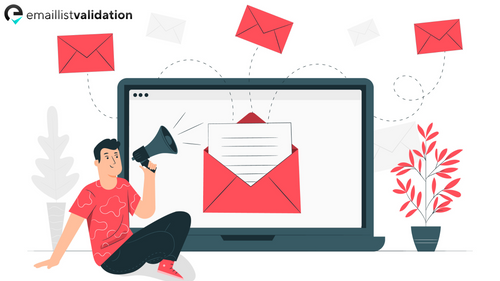In today's fast-paced digital world, where information flows at the speed of light, efficiency and data accuracy are paramount. One critical aspect of maintaining data integrity is email verification. Whether you're managing user sign-ups, customer data, or communication channels, ensuring that email addresses are valid is essential. Email verification automation emerges as a game-changer, offering a faster, more accurate, and hassle-free way to verify email addresses. In this comprehensive guide, I'll walk you through the world of email verification automation, providing expert insights, techniques, and tools to elevate your automation prowess.
Why Email Verification Automation Matters
Before we delve into the intricacies of email verification automation, it's essential to understand why it holds such significance in today's digital landscape.
Data Accuracy: Accurate data is the lifeblood of organizations. Email verification automation helps maintain data integrity by ensuring that email addresses are valid and up-to-date.
User Experience: Streamlining the verification process enhances the user experience by reducing friction during sign-up and communication.
Security: Validating email addresses helps protect your systems from potential threats, such as spam, fraud, or phishing attacks.
Time and Cost Savings: Automation eliminates the need for manual email verification, saving time and reducing operational costs.
The Anatomy of Email Verification Automation
Now, let's explore the essential components and techniques of email verification automation.
1. Email Syntax Validation:
The first step in email verification is syntax validation. This process checks whether the email address follows the correct format, including "@" and "." symbols. Automation tools use regular expressions or built-in functions to perform syntax validation.
2. Domain Verification:
After syntax validation, email verification automation verifies the domain part of the email address. It checks if the domain exists, is responsive, and has valid DNS records. Tools may utilize DNS queries or APIs to perform domain verification.
3. SMTP Validation:
SMTP (Simple Mail Transfer Protocol) validation involves connecting to the mail server associated with the email address's domain and determining whether the mailbox exists. Automation tools use SMTP commands to carry out this verification.
4. Disposable Email Detection:
To prevent spam and maintain data quality, email verification automation can detect disposable or temporary email addresses. It cross-references the email address with a database of known disposable email providers.
5. Role-Based Email Detection:
Role-based email addresses (e.g., [email protected]) are often used for generic purposes and may not belong to individual users. Email verification automation can identify and flag such addresses.
6. Real-Time Verification vs. Batch Verification:
Email verification automation can operate in real-time, verifying email addresses as users enter them, or in batch mode, processing a list of email addresses all at once. The choice depends on your specific use case.
Tools and Techniques for Email Verification Automation
Several tools and techniques can help you implement email verification automation effectively.
1. Third-Party Email Verification Services:
Several third-party services offer APIs or web interfaces for email verification. These services can perform comprehensive email verification checks and provide real-time results.
2. Custom Scripts and Automation Frameworks:
For more control over your email verification process, you can develop custom scripts using programming languages like Python or utilize automation frameworks like Selenium to interact with web-based email verification tools.
3. Integration with Registration and CRM Systems:
To ensure data accuracy from the point of entry, integrate email verification automation with your registration and CRM (Customer Relationship Management) systems.
4. Regular Maintenance:
Keep your email verification automation up-to-date by periodically reviewing and updating the validation rules, especially as new disposable email providers emerge.
Commonly Asked Questions About Email Verification Automation
Let's address some of the frequently asked questions about email verification automation:
1. Is email verification automation suitable for all types of organizations?
Email verification automation benefits organizations of all sizes and industries, particularly those that rely on accurate customer data and communication.
2. How accurate are third-party email verification services?
The accuracy of third-party services can vary, but reputable providers offer high accuracy rates. It's essential to choose a trusted service.
3. Can email verification automation prevent all spam and fraudulent registrations?
While email verification automation helps reduce spam and fraud, it may not eliminate all instances. Combining it with other security measures is advisable.
4. Are there open-source email verification tools available for automation?
Yes, there are open-source libraries and tools for email verification, but their capabilities may be more limited compared to commercial solutions.
5. How frequently should I update my email verification automation rules?
Regular updates are crucial, especially when new disposable email providers or changes in email syntax emerge. Aim for quarterly or semi-annual reviews.
In conclusion, email verification automation is a powerful tool for organizations looking to enhance data accuracy, user experience, and security. By implementing email verification automation effectively and staying informed about best practices and tools, you can optimize your workflows and ensure that your data remains reliable and up-to-date. Email verification automation is not just a time-saver; it's a game-changer in today's data-driven digital landscape.



